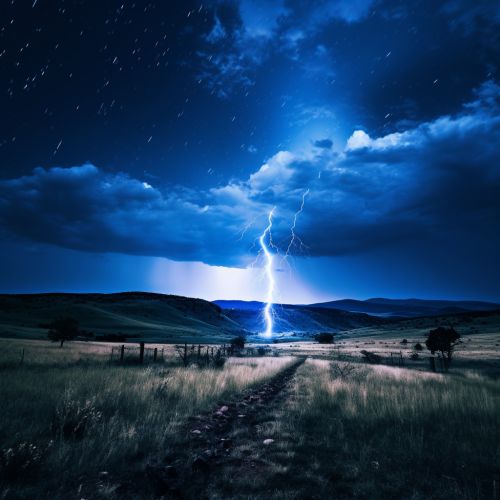Lightning
Introduction
Lightning is a naturally occurring electrostatic discharge during which two electrically charged regions, either within the clouds or between a cloud and the ground, equalize themselves causing the instantaneous release of as much as one billion joules of energy. This article provides a comprehensive and detailed overview of the phenomenon of lightning, discussing its causes, types, effects, and the science behind it.
Formation
The formation of lightning involves a complex process with multiple steps. It begins with the separation of positive and negative charges within a cloud. This charge separation is not fully understood, but it is thought to be related to the interactions between ice particles, liquid water droplets, and hailstones within a storm cloud. The updrafts and downdrafts within the cloud help to separate these charges.
As the process continues, an imbalance between these charges develops, with positive charges accumulating at the top of the cloud and negative charges at the bottom. This charge separation creates an enormous electric potential both within the cloud and between the cloud and the ground, setting the stage for the lightning discharge.
Types of Lightning
There are several types of lightning, including intracloud lightning, cloud-to-ground lightning, and cloud-to-cloud lightning.
Intracloud lightning, the most common type, occurs within the cloud itself, between the positively charged top of the cloud and the negatively charged bottom.
Cloud-to-ground lightning, which is what most people think of when they think of lightning, occurs between the cloud and the ground.
Cloud-to-cloud lightning, as the name suggests, occurs between two or more separate clouds.
Lightning Discharge
The actual discharge of lightning, a rapid event known as a lightning flash, can occur within a cloud, between clouds, or between a cloud and the ground.
The discharge begins with a preliminary breakdown process, in which a small bidirectional channel of ionized air, or a "leader", forms. The leader starts at a positively charged region and propagates towards a negatively charged region.
Once the leader makes contact with a region of opposite charge, the lightning flash occurs. This flash, or the "return stroke", travels at a speed of approximately 100,000 km/s and can reach temperatures of 30,000 K, hotter than the surface of the sun.
Effects of Lightning
Lightning has several effects, both direct and indirect. Direct effects include damage to structures and fires, while indirect effects include the creation of ozone and nitric oxide, which are important constituents of the atmosphere.
Lightning also plays a role in the nitrogen cycle, as the high temperatures and pressures associated with a lightning strike can cause nitrogen and oxygen in the atmosphere to react, forming nitric oxide. This nitric oxide can then react with other compounds to form nitrates, which are an important nutrient for plants.
Lightning Safety
Lightning can pose a significant risk to people and property. Therefore, it is important to take precautions during a thunderstorm to avoid being struck by lightning. This can include seeking shelter indoors, avoiding tall objects and open fields, and avoiding contact with electrical equipment or plumbing.
See Also


